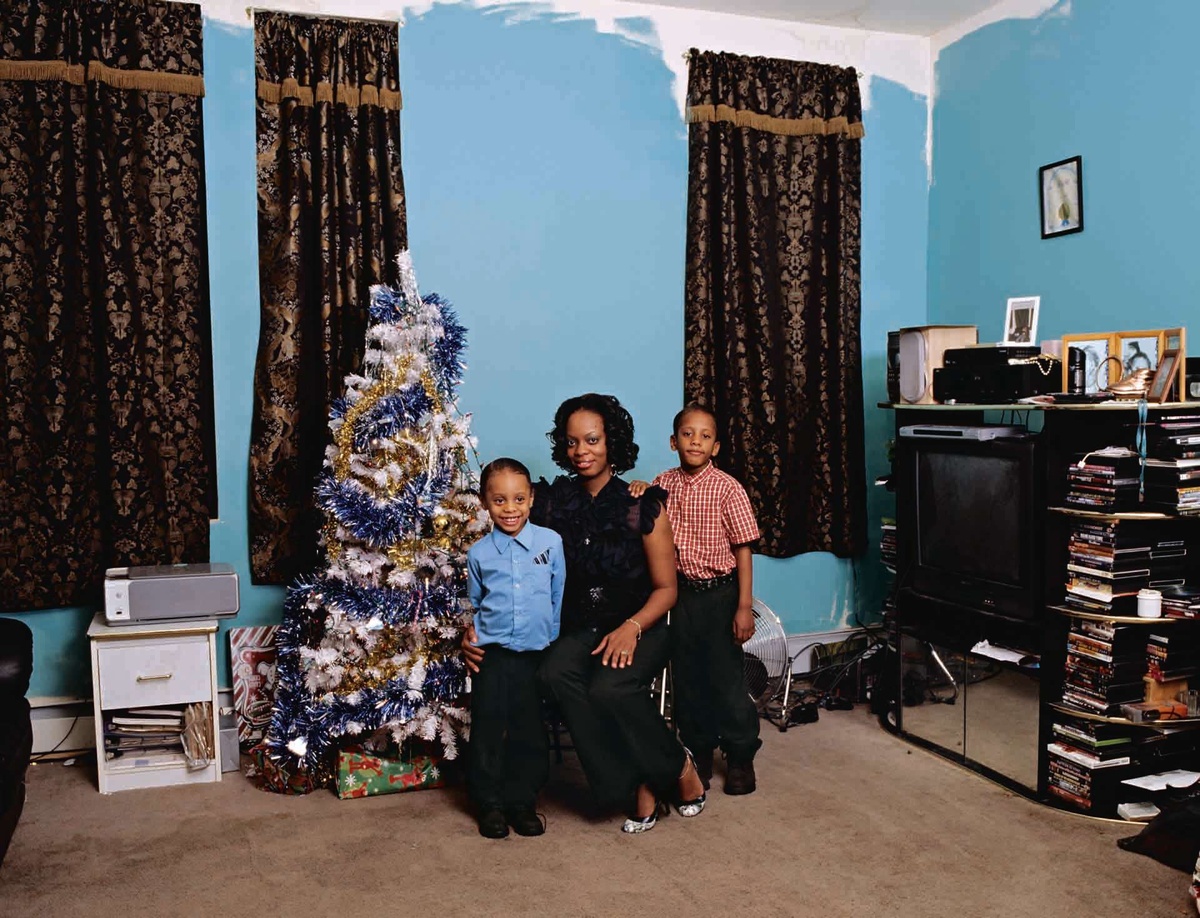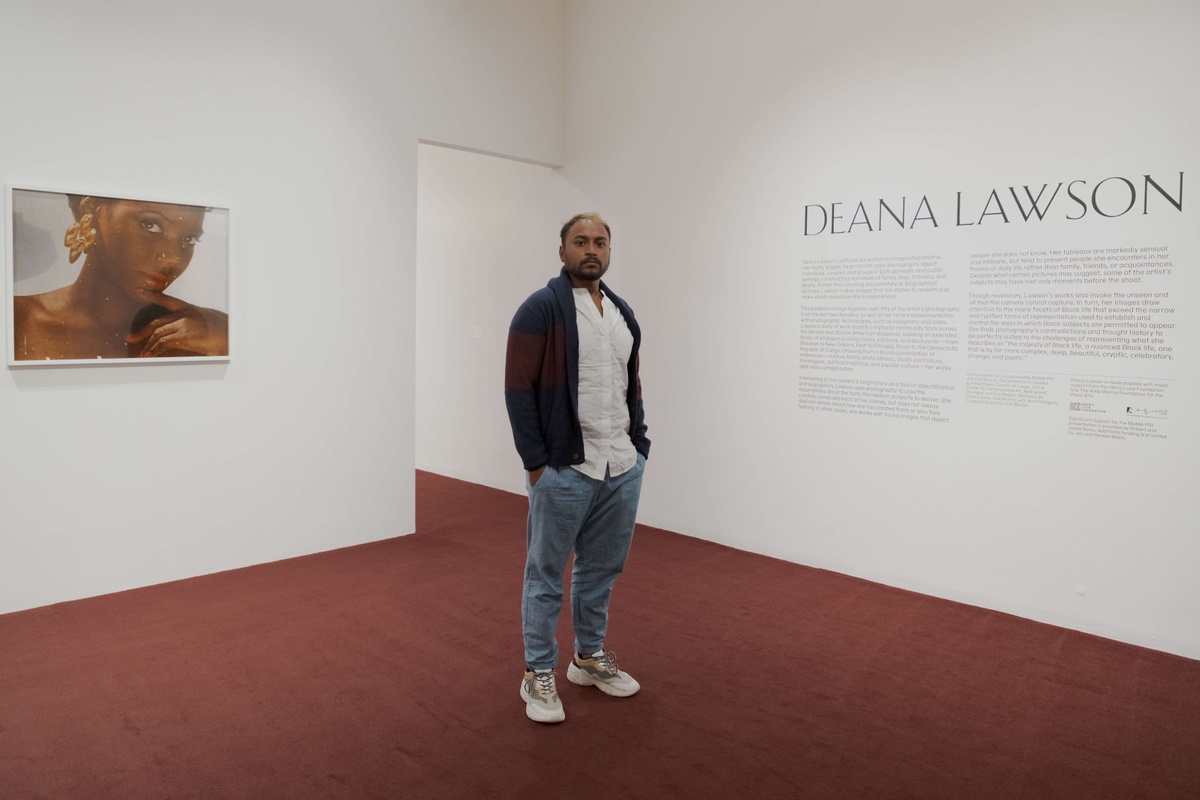Deana Lawson's "Coulson Family"
Artists on Artworks: Avijit Halder
- Audio

Deana Lawson. Coulson Family. 2008. Pigment print.
Courtesy the artist; Sikkema Jenkins & Co., New York; and David Kordansky Gallery, Los Angeles. © Deana LawsonCoulson Family might seem like a straightforward family portrait. But take a closer look at the partially painted blue wall. For photographer Avijit Halder, who was included in Greater New York 2021, it's a hint that not everything is as it seems: "Photography has been used for a long time as evidence, as this truthful thing. But everything about a photograph is a lie." Deana's works layer photographic traditions—from family snapshot to archival document to posed studio portrait. And like the jagged edge of the blue wall, they suggest that a photograph's meaning is more layered—perhaps even more choreographed—than it immediately appears. For Avijit, Deana's work is akin to painting: it composes fiction that may reveal deeper truths.
Hear the full conversation with Avijit on Coulson Family in our Artists on Artworks series.

